When it comes to managing your roofing needs, a comprehensive roof management company offers a wide range of services to ensure that your roof will remain in top condition. Built Up Roofing (BUR) services are a key offering of our company. This system provides a durable and cost-effective solution for flat or low-slope roofs. It contains multiple bitumen layers that create a robust and waterproof roof for both residential and commercial buildings.
Welcome to ManageMyRoof, a roofing company that meets high standards with quality, technology, and modernization.
Let us know in detail about the BUR roofing system, its types, procedure of installations, pros and cons, and our company’s services here.
What Is Built Up Roofing?
Built-up roofing is a popular roofing system that is highly preferred for flat roofs, or roofs with low slopes. It consists of multiple layers of materials that provide durability and protection to your roofs.

Built-up roofing systems have been widely used in the US for centuries, particularly in commercial buildings. Their longevity, often up to 40 years, makes them reliable options for many structures.
Our company specializes in BUR installation and has a skilled team of professionals who handle the complex layering process of adhesion and sealing. This expertise is crucial for maximizing your roof’s lifespan.
Components of Built-Up Roofing!
A built up roof system is a time-tested roofing solution that consists of multiple layers of bitumen surfaces and reinforcing fabrics. These components work together to create a resilient, waterproof, and long-lasting roofing system.
The main component of these systems includes multiple bitumen, alternating with fabrics, and a top layer of aggregate coating to protect the roof from the elements. These components include:-
- Base Sheets
It is the first layer of the polyisocyanurate insulation that is applied directly to the roof’s deck technically through the use of mechanical fasteners. This sheet serves as the bottom layer of waterproofing protection for the roof system and provides a surface that allies subsequent sheets to have adhered with the bitumen.
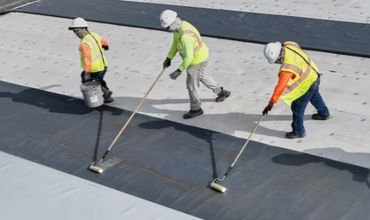
- Bitumen
Bitumen, which can be asphalt or coal tar, acts as a primary waterproofing material. This layer is applied over the base sheet for the installation of reinforcing felt, called a ply sheet. Contractors can either select hot or cold mopping asphalt to bind the layers together.
- Ply Sheets
These are the reinforcing fabrics, often made of fiberglass or an organic material that are embedded in the bitumen. Multiple layers of ply sheets are used in roofing to enhance its strength and durability.
- Surfacing Material
The surfacing material is the top layer of the built up roofs, which can be either gravels, mineral granules, or a reflexive coating that protects the underlying material from the effects of UV rays, weather, and physical damage.
- Insulation
It is optional to provide an insulation layer on the roofs. Some contractors use these layers to improve the efficiency of your building’s roof and provide additional thermal protection.
Types Of A Built-Up Roof System & Its Details!
There are several types of built-up roofing systems, each with distinct characteristics, components, and installation processes. The main types include asphalt, gravel, modified bitumen, and cold application.
Each type has its own advantages and is suitable for different applications depending on factors such as climate, building structure, and budget. Here are the types of BUR system below:-
- Built Up Asphalt Roofing/Hot Asphalt Roofs

Built-up asphalt roofing, often referred to as Hot asphalt roofing, is a type of BUR system where asphalt is primarily used in the roof’s waterproofing. This roofing method has been widely used for over a century due to its durability and effectiveness.
Components
- Base sheets
- Ply sheets
- Asphalt (Hot)
- Surfacing material (gravel, mineral cap sheet, etc)
Installation Process
- Preparation of the roof deck is the first step in determining whether the deck is clean and primed.
- Afterward, the base sheet is installed mechanically on the roof deck.
- Now, hot asphalt and ply sheets are applied to the roof in multiple layers.
- At last, the roof’s surfacing is done by the technicians to make sure that the underlying objects are safe and securely packed.
- Built Up Tar And Gravel Roof
Built up tar gravel roof is one of the traditional and reliable roofing systems used for flat and low slope roofs. This roofs consist of multiple lakers of bitumen (Tar) and reinforcement fabrics and is topped with a layer of gravel and crushed stones.
Components
- Bitumen Layers
- Reinforcing Fabrics
- Gravel layer
Installation Process
- The roof is first cleaned by a technician and all the debris is removed from it.
- Now, a base layer of hot bitumen is applied to the roof, creating a waterproof seal.
- Now, multiple reinforcing fabrics are embedded into hot bitumen that adds strength and thickness to the roof.
- Now, the gravel is applied on top of those thick layers, making it capable of holding harmful UV rays and foot traffic. The Tar and Gravel roof is all installed and ready.
- Cold Built-Up Roofing
These materials are similar to hot asphalt roofing, but they use cold asphalt instead of hot asphalt to bond the roof layers.
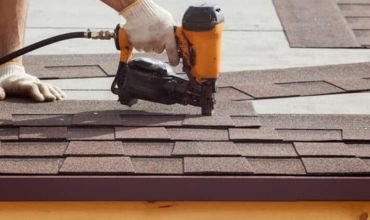
Components
- Base sheets
- Ply sheets
- Asphalt (cold)
- Surfacing material
Installation Process
Same as Built-up asphalt roofing.
- Built Up Membrane Roof/Ballasted Roofing
Ballasted Built-up roofing and membrane roofing systems are popular choices for flat or low-slope roofs due to their durability and ease of installation. It can be installed easily by a technician and saves labor costs of yours.
Components
- Roof Deck/base sheet
- Insulation layer
- Roofing Membrane (EPDM, TPO, and PVC)
- Ballast
Installation Process
- Make sure your roof is clean and dry and have a smooth surface.
- Now, lay down the insulation layer over the roof’s deck.
- Now, a roofing membrane is rolled out over the insulation.
- Then, ballast materials such as gravel, pavers, and stones are evenly distributed over the membrane. This step is crucial as it holds the membrane in its place and provides additional protection.
- At last, flashing is installed around the roof penetration and edges to ensure a watertight seal at the roof.
Why Is a Built Up Roof Highly Preferred?
Built up roofing system is highly preferred by clients for several reasons, particularly for flat or low-slope roofs. Some of their key considerations are:-
- Longevity & Durability
- Multiple Layer
These roofing systems consist of multiple layers of materials, including hot or cold asphalt, tar and gravel, roofing membranes, etc. They provide exceptional durability and a long lifespan to your roofs.
- Redundancy
The multiple layers of bitumen and reinforcement fabrics offer redundancy, which means that if the top layer of your roof is damaged, the underlying layers can continue providing a waterproof roof for your building.
- Weather Resistance
- Protection Against Elements
The topmost layer of gravel or mineral granules protects the roof from UV rays, wind, and physical damage, making it highly resistant to various weather conditions.
- Water Proofing
The bitumen layers form a durable and waterproof membrane that acts as an effective barrier against water penetration.
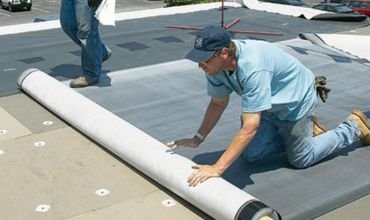
- Cost Effectiveness
- Low Maintenance
BUR systems require minimal maintenance compared to other roofing types, reducing long-term costs for the customers.
- Energy Efficiency
The insulation layers in the BUR system can improve energy efficiency by providing thermal protection, which can lead to lower heating and cooling costs.
- Proven Performance
- Historical Reliability
Built up roof system has been used for over centuries, particularly in commercial buildings. This proves its reliability and effectiveness over time.
- Versatility
It is versatile and suitable for various buildings and adaptable to different climatic conditions and environmental changes.
- Safety & Fire Resistance
- Fire Resistance
The materials which are used in the built-up roofing such as bitumen and gravel, are fire resistant. This provides safety to you and your premises from fire and other things.
Basic Maintenance Offered By ManageMyRoofs!
Our company offers a comprehensive rebate of services to ensure the optimal performance and longevity of Built up roofing system. Here are the key services that we offer to our clients.
- Inspection Service
- Our company conducts regular inspections to identify potential issues, which helps our customers reduce the cost of repairs.
- Our technicians also use advanced infrared technology to detect moisture and other hidden problems in the roof system.
- Maintenance & Repairs
- Our team of high-profile workers implements various maintenance programs that fully extend the life of the BUR systems and maintain their performance for years.
- We also provide emergency repair service to our customers that is available for them 274*7.
- Installation & Replacement
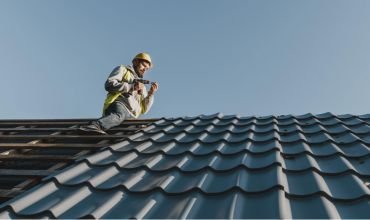
- The clients will receive expert installation of a new Built-Up roofing system to ensure proper layering and adhesion for maximum durability.
- Moreover, we also replace old or damaged BUR systems with new, high-quality materials at an effective cost.
- Design & Bidding
- We also suggest our customers with some specific designs that meet the needs and requirements of specific premises. However, we also prepare roof designs as per our client’s needs.
- Sustainable Solutions
- We combine solar panels with a built-up roofing (BUR) system to improve the building’s overall energy efficiency and environmental sustainability.
- This integration allows us to harness solar energy while also providing the benefits of a durable and reliable roofing system.
Are Built Up Roofs Worth The Investment?
Although built-up roofing systems are inexpensive, many people believe they are overhyped and unworthy. Let me tell you why they think so.
- BUR systems are very heavy, which is their biggest drawback. If this system is being installed on an old or historic building, it might need extra structural support.
- When it comes to BUR systems, it is considered that they are more vulnerable to damage.
- As these systems are heavy, it takes time to install them on a roof. In addition to the weight factor, the multiple layers of asphalt take time to settle on the roof.
- Moreover, it is also a big factor in finding skilled contractors to meet your built-up roofing needs.
- Asphalt and tar, materials used in the construction of built-up roofs, are not environmentally friendly. That is why it is important to contact skilled technicians who follow proper disposal procedures and use eco-friendly materials whenever possible.
ManageMyRoof is a company that meets all your needs and requirements for constructing built up roofs for your commercial building. We stand by all the market standards and help our customers in every possible way. You are just a call away. Visit our website and book your appointment now!
Commonly Raised Queries!
A built-up roof is a roof where multiple layers of asphalt are used with ply sheets, and insulation is also attached to the surface.
In a built up roof system, technicians basically use 4 layers that are the base sheets, felt or fabrics, bitumen, and surfacing or coating of gravels and mineral sheets.
Yes, ManageMyRoof is a roof management company that also installs built-up roofing system at your premises as per the requirements of our clients.
Built-up roofing lasts for 25 to 30 years.
Customers can us by visiting our official website, i.e., ww.managemyroof.com.
Yes, it would take more than 5 days to 2 weeks to install built-up roofs in your building.
The cost of installing a built-up roof at your residence would range from $2.75 to $6 per square foot.
Yes, tar and gravel roofs have several advantages over asphalt roof systems, particularly in terms of cost, durability, and weather resistance.
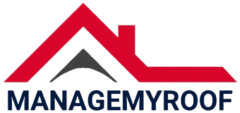
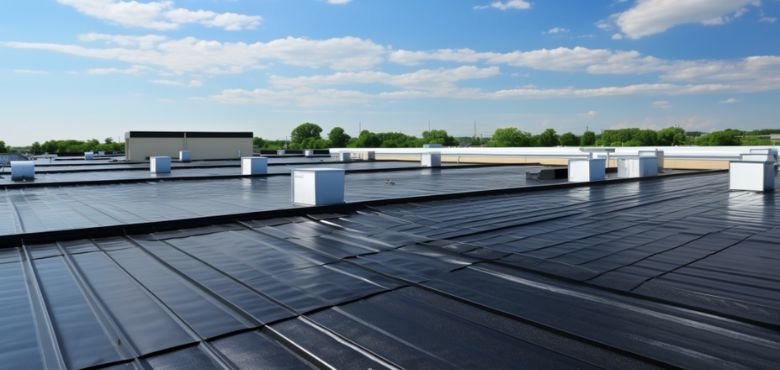
Leave a Reply